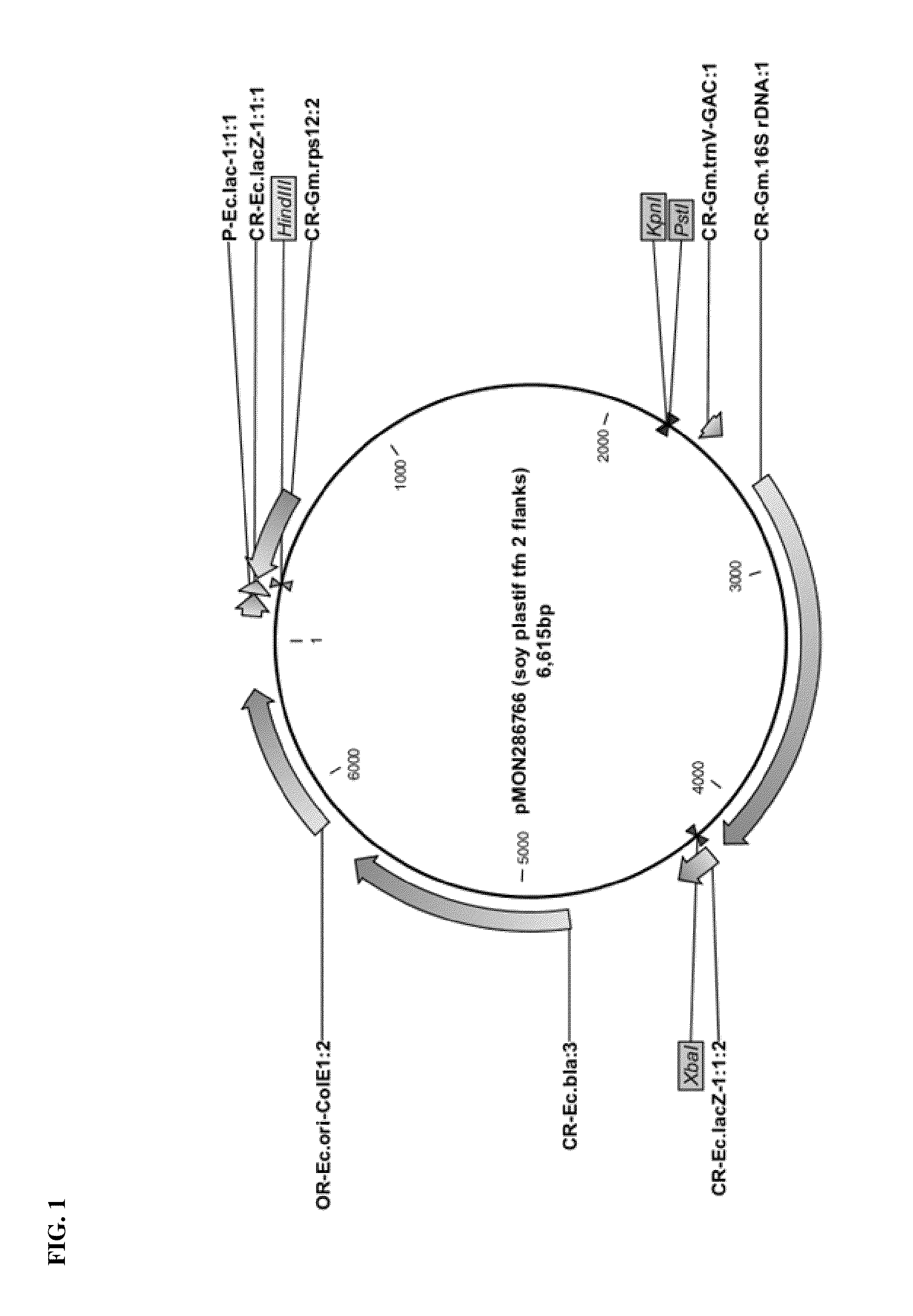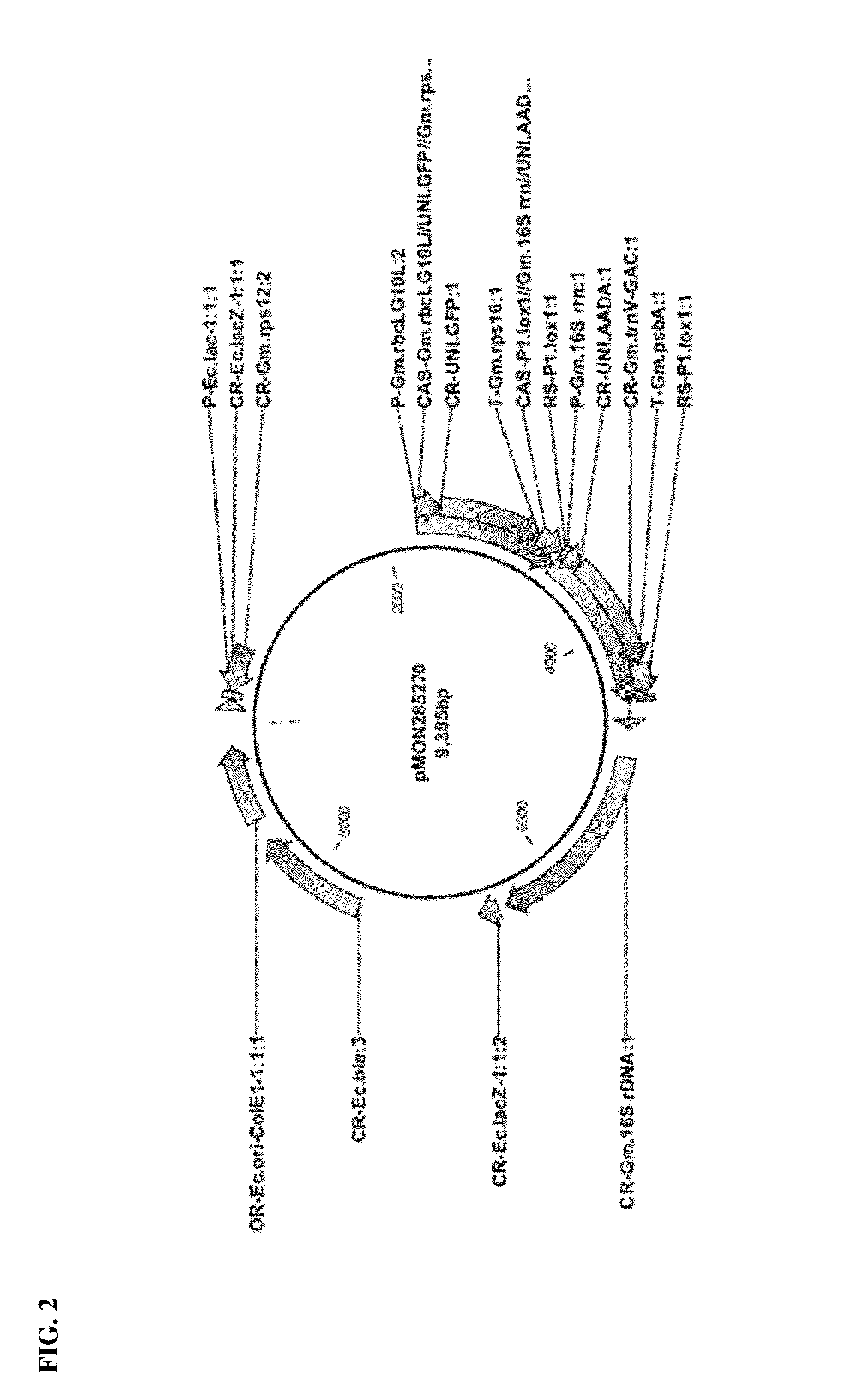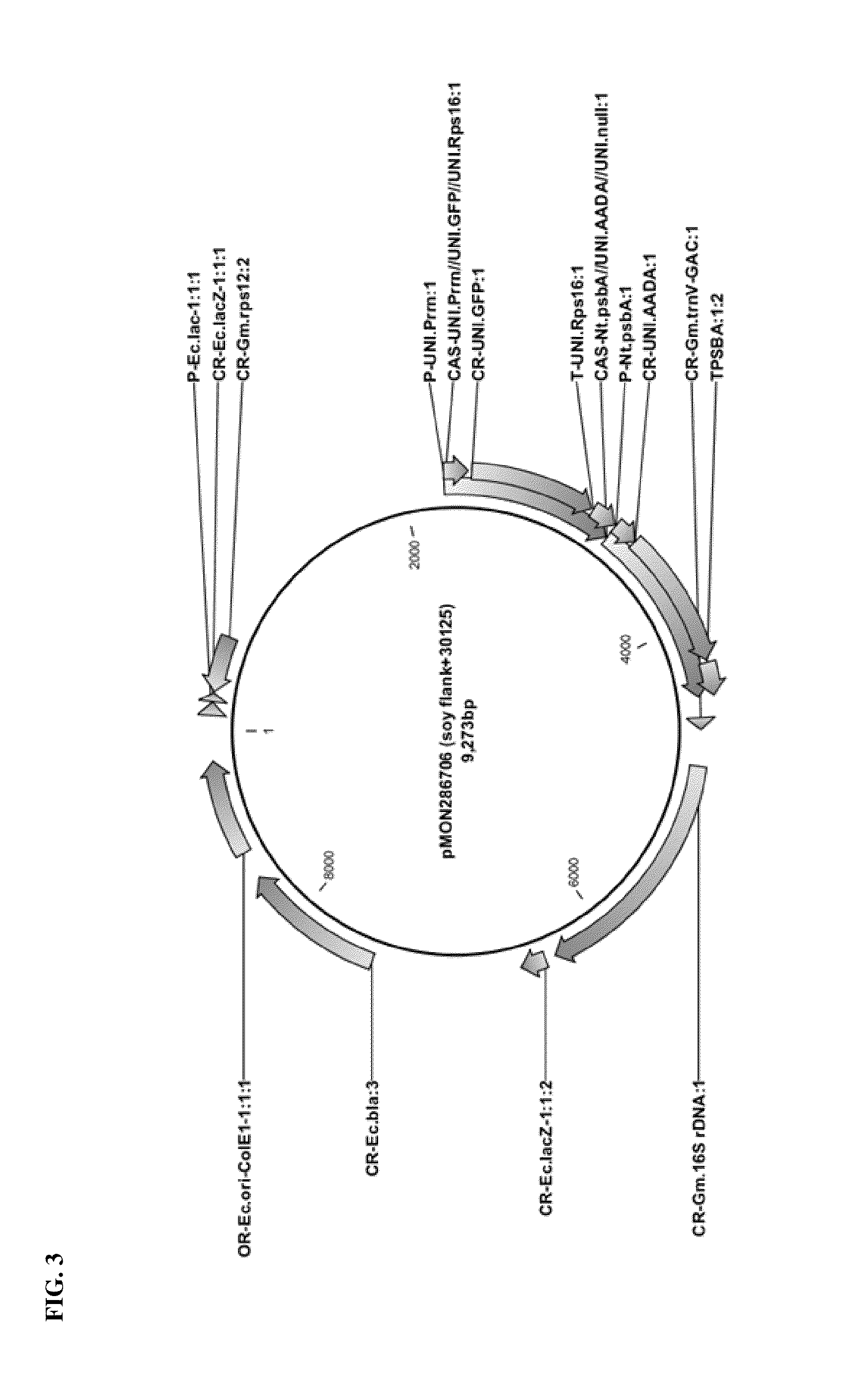Methods for plastid transformation
a technology of plastids and methods, applied in the field of agricultural biotechnology, can solve the problems of time-consuming and inefficient existing methods for plastid transformation, and achieve the effects of enhancing animal and human nutrition, enhancing yield, and modifying protein
- Summary
- Abstract
- Description
- Claims
- Application Information
AI Technical Summary
Benefits of technology
Problems solved by technology
Method used
Image
Examples
example 1
Vector Construction for Soy Plastid Transformation
[0096]Chimeric Soybean 16S rDNA Promoter Construction:
[0097]A soybean 16S rDNA 5′ UTR sequence (SEQ ID NO: 1) comprising a −35 motif (ATTACA) and a −10 motif (GGCTATATT) according to BPROM analysis (SoftBerry, Inc.), which has been shown to drive constitutive expression in chloroplasts, was fused to a G10 leader sequence (SEQ ID NO: 2), to construct a chimeric promoter for use in soybean plastid transformation. A P-Gm.rrn / G10L promoter sequence (SEQ ID NO: 3) from pMON45263 vector containing the 16S rDNA 5′ UTR sequence fused to the G10 leader sequence was found to contain two potential promoter elements, which may result in expression of two transcripts in chloroplasts. To avoid this potential issue, the second set of −35 and −10 motifs were deleted from the pMON45263 sequence to form a modified pMON45263 construct with a P-Gm.16S rrn promoter sequence (SEQ ID NO: 4). This P-Gm.16S rrn promoter sequence was confirmed to have a ribos...
example 2
Preparation of Beads and Carrier Sheets for Bombardment of Soy Explants
[0104]Beads and carrier sheets for bombardment of dry excised embryo explants from soybean seeds using PDS 1000 helium particle guns or ACCELL electric particle guns were prepared according to the following protocol.[0105]1. 50 mg of 0.6 μm gold particles was weighed into a clean DNase, RNase free tube. Gold was washed by sonication with 1 ml of 100% ethanol.[0106]2. The gold particles were pelleted by brief centrifugation, and ethanol was completely removed.[0107]3. The gold particles were resuspended in 1 ml of 100% ethanol, and stored at −20° C. until use. The particles were completely resuspended prior to use by sonication.[0108]4. 42 μl of the gold particles were transferred to a new tube, pelleted by centrifugation, and the ethanol was removed.[0109]5. 500 μl of sterilized water was added, and the gold particles were resuspended by sonication. The gold was pelleted by centrifugation, and water was removed c...
example 3
Preculturing Soy Explants for Particle Bombardment
[0125]Dry excised soybean embryo explants were precultured prior to particle bombardment according to the following protocol. The mature embryo explants were excised dry soybean seeds as generally described in U.S. Pat. No. 8,362,317. An example of dry excised soybean embryo explants are shown in FIG. 5 (See also, e.g., FIG. 1 of U.S. Pat. No. 8,362,317).[0126]1. The explants were weighed for blasting, rehydrated for 1 hr in either a 20% PEG4000 (Lynx 3017; Table 1) or 10% sucrose medium, and rinsed well. Lynx 1595 (Table 2) medium (or Lynx 1595 with 30 ppm Cleary's) can also be used for this step.[0127]2. Approximately 50 explants per plate were precultured on EJW 1 media (Table 3) or EJW 2 media (Table 4). TDZ levels in the range of approximately 0.5 ppm to 2 ppm were used.[0128]3. Explants were precultured for 1-2 days at 28° C., either using a 16 / 8 photoperiod or in the dark. Preculturing the explants for 3 days was also effectiv...
PUM
| Property | Measurement | Unit |
|---|---|---|
| time | aaaaa | aaaaa |
| time | aaaaa | aaaaa |
| time | aaaaa | aaaaa |
Abstract
Description
Claims
Application Information
 Login to View More
Login to View More - R&D
- Intellectual Property
- Life Sciences
- Materials
- Tech Scout
- Unparalleled Data Quality
- Higher Quality Content
- 60% Fewer Hallucinations
Browse by: Latest US Patents, China's latest patents, Technical Efficacy Thesaurus, Application Domain, Technology Topic, Popular Technical Reports.
© 2025 PatSnap. All rights reserved.Legal|Privacy policy|Modern Slavery Act Transparency Statement|Sitemap|About US| Contact US: help@patsnap.com



